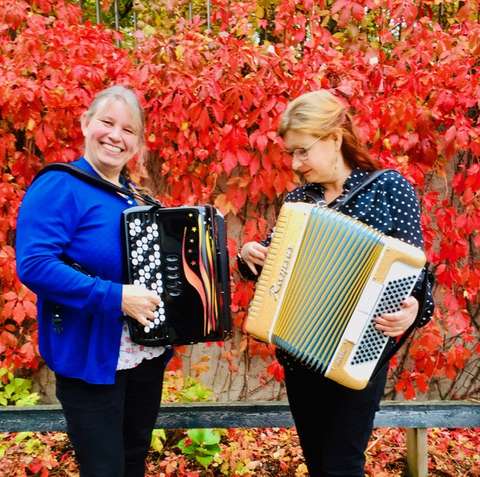HoivaPelimannit bring the joy of music to the elderly
Music, joy and encounters. That is how Maria Kalaniemi, Espoo-based accordion artist, sums up the project launched by the JuuriJuhla-RotFest festival.
HoivaPelimannit visits the Viherlaakso Memory Service Centre every other week to delight the residents with a music performance. Besides Kalaniemi, the performance includes another Espoo accordion artist, Elina Leskelä.
Viherlaakso Memory Service Centre has almost 50 residents with a memory disorder. Many elderly or memory-impaired people benefit greatly from music and especially the interactive aspect involved in the performance.
“Art and music are for everyone, including elderly people and people with a memory disorder and others who cannot come to see the performance elsewhere,” says Maria Kalaniemi.
The participatory music sessions bring up memories that can be discussed together with the residents.
“These encounters are not concerts in the traditional sense, but rather provide a musical bridge to memories that can then be shared with others,” Kalaniemi says.
In addition to memories, music also evokes emotions, both laughter and tears. It has had a clear therapeutic effect on the clients.
“Our residents have enjoyed the performances that have lifted their mood visibly,” says service instructor Camilla Gröndahl from Viherlaakso Memory Service Centre.
Hoping for continuation
The work of HoivaPelimannit began with assistance from the City of Espoo.
“We were happy and fortunate to receive a grant from the City of Espoo for this project. It enables us to do this,” says Kalaniemi.
The grant has made it possible to plan for activities. HoivaPelimannit aims to introduce the music sessions in other nursing homes as well. The idea is to make the sessions a permanent part of everyday life in nursing homes.
“Residents already know to ask for the ‘musician girls’, meaning that they remember the previous visits of the HoivaPelimannit. I would not have believed how many of the residents remember the previous performances,” says Gröndahl.
Kalaniemi points out that music sessions also increase the well-being of the family members and nursing staff. After the performances, even the restless residents are significantly calmer, in a good mood and more inclined to accept care.
Kalaniemi and Leskelä have worked together for decades, and both share personal experiences of the importance of music in treating people with memory disorders.
“I was with my mother on her Alzheimer’s journey for ten years, spending hundreds of hours singing and playing for her. When there are no more words, it is still possible to communicate through music and touch,” says Kalaniemi.
